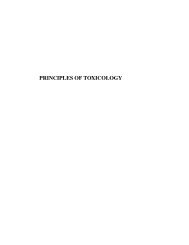Insect-pests - Biology East Borneo
Insect-pests - Biology East Borneo
Insect-pests - Biology East Borneo
You also want an ePaper? Increase the reach of your titles
YUMPU automatically turns print PDFs into web optimized ePapers that Google loves.
16 <strong>Insect</strong> Pests and Diseases of Major Plantation Species<br />
Table 4.1. <strong>Insect</strong> <strong>pests</strong> of Acacia mangium in Indonesia<br />
Type of damage<br />
Scientific name<br />
Common name<br />
Notes<br />
Root-feeding<br />
Coptotermes curvignathus<br />
(Isoptera, Rhinotermitidae)<br />
Termite<br />
Causes death of saplings<br />
Leaf-feeding<br />
Pteroma plagiophleps and<br />
other bagworms<br />
(Lepidoptera, Psychidae)<br />
Bagworms<br />
Unidentified caterpillar<br />
(Lepidoptera, Noctuidae)<br />
Caterpillar Plusia<br />
On young saplings<br />
Valanga nigricornis<br />
(Orthoptera, Acrididae)<br />
Grasshopper<br />
Sap-sucking<br />
Helopeltis theivora and<br />
other Helopeltis spp.<br />
(Hemiptera, Miridae)<br />
Mosquito bug<br />
On young saplings<br />
Twig-boring<br />
Xylosandrus sp. and<br />
Xyleborus fornicatus<br />
(Coleoptera, Scolytidae)<br />
Pinhole borers<br />
Attacked small branches<br />
often dry up and break<br />
Trunk-boring<br />
Xytrocera festiva<br />
(Coleoptera, Cerambycidae)<br />
Stem borer<br />
The leaf-feeding bagworm, Pteroma plagiophleps has<br />
been recorded in many plantations. It is a polyphagous<br />
caterpillar, which is generally a minor pest on most of its<br />
hosts although localised outbreaks have occurred in<br />
Paraserianthes falcataria and some other hosts (Nair and<br />
Mathew 1992). Other unidentified bagworms are<br />
commonly seen on A. mangium but all are minor leaffeeders.<br />
The grasshopper, Valanga nigricornis, also a<br />
polyphagous leaf-feeder, is often seen in A. mangium<br />
plantations in fairly large numbers. It appears sporadically<br />
and eats even the shoot tips. In teak plantations in Java,<br />
it causes recognisable damage periodically but has not<br />
become a serious pest. It is particularly active in the border<br />
zone between forests and open ground (Hutacharern<br />
1993). Locusta sp., with similar feeding habits, occurs less<br />
frequently. Other leaf feeding insects are also occasional<br />
minor <strong>pests</strong>. Caterpillars of an unidentified moth,<br />
tentatively called, ‘Plusia’, feeds on the leaves (phyllodes)<br />
of young saplings (PT. Riau Andalan Pulp and Paper,<br />
personal communication).<br />
The sap-sucking bug Helopeltis spp. is the principal pest<br />
in plantations in Sumatra. These are well-known <strong>pests</strong> of<br />
several horticultural and tree crops in the tropics, such<br />
as, tea, cacao, cinchona, cashew and neem. Localised<br />
damage by Helopeltis sp. to A. mangium has been<br />
reported from Malaysia (Hamid 1987) and Philippines<br />
(Luego 1990) and it regularly causes severe damage in 6-<br />
18-month-old plantations in North and Central Sumatra<br />
(Wylie et al. 1998). The principal species is H. theivora,<br />
but H. fasciaticollis and H. sumatranus have also been<br />
recorded (Wylie personal communication). Feeding by<br />
Helopeltis spp. causes necrotic spots on the leaves and<br />
often dieback of tender shoots. Shoot dieback is probably<br />
caused by injection of toxic saliva or pathogenic<br />
organisms in the feeding process. Some companies have<br />
applied urea to boost the growth of attacked saplings<br />
and in rare cases insecticides like deltamethrin have been<br />
used. More systematic observations are needed to assess<br />
the quantitative impact and some plantation companies<br />
are doing this. In cashew plantations in Kerala, India,<br />
damage by H. theivora is most serious during the flushing<br />
and flowering season, causing the top layer of the crown<br />
to dry out and necessitating regular prophylactic<br />
insecticidal sprays to prevent yield loss.<br />
Pinhole borers, Xyleborus fornicatus and Xylosandrus<br />
sp., attack small branches which often dry up and
















